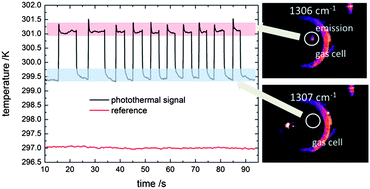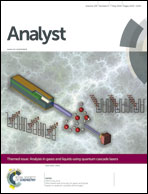Broadband spectroscopy with external cavity quantum cascade lasers beyond conventional absorption measurements
Abstract
Laser spectroscopy is a powerful tool for analyzing small molecules, i.e. in the gas phase. In the mid-infrared spectral region quantum cascade lasers (QCLs) have been established as the most frequently used laser radiation source. Spectroscopy of larger molecules in the gas phase, of complex mixtures, and analysis in the liquid phase requires a broader tuning range and is thus still the domain of Fourier transform infrared (FTIR) spectroscopy. However, the development of tunable external cavity (EC) QCLs is starting to change this situation. The main advantage of QCLs is their high spectral emission power that is enhanced by a factor of 104 compared with thermal light sources. Obviously, transmission measurements with EC-QCLs in strongly absorbing samples are feasible, which can hardly be measured by FTIR due to detector noise limitations. We show that the high power of EC-QCLs facilitates spectroscopy beyond simple absorption measurements. Starting from QCL experiments with liquid samples, we show results of fiber evanescent field analysis (FEFA) to detect pesticides in drinking water. FEFA is a special case of attenuated total reflection spectroscopy. Furthermore, powerful CW EC-QCLs enable fast vibrational circular dichroism (VCD) spectroscopy of chiral molecules in the liquid phase – a technique which is very time consuming with standard FTIR equipment. We present results obtained for the chiral compound 1,1′-bi-2-naphthol (BINOL). Finally, powerful CW EC-QCLs enable the application of laser photothermal emission spectroscopy (LPTES). We demonstrate this for a narrowband and broadband absorber in the gas phase. All three techniques have great potential for MIR process analytical applications.

- This article is part of the themed collection: Analysis in gases and liquids using quantum cascade lasers

 Please wait while we load your content...
Please wait while we load your content...